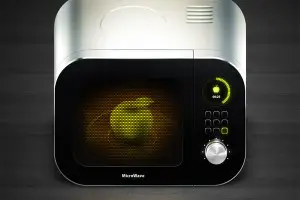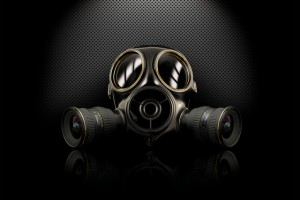I may get commissions for purchases made through links in this post.

The air quality in your home is of utmost importance. Modern homes and businesses emit gases and expose us to chemicals, fumes, toxins, smoke, viruses, and bacteria with all kinds of adverse consequences.
Indoor air on average, is 2 to 5 times more polluted than outdoors. In the Western world we spend up to 90 percent of our time indoors.
Especially children seem to suffer from poor indoor air quality and incidence of asthma and allergies is skyrocketing especially in urban areas.
It is said that house plants can significantly reduce the amount of pollutants in the indoor environment. Which, on itself, sounds very plausible.
After all plants, by photosynthesis, absorb carbon dioxide and release oxygen to the air and it’s not for no reason that the Amazonian rainforest is are called ‘the lungs of the world’.
Also, the use of plants could be very beneficial since air purifiers and filtration systems are not able to filter all indoor air pollutants
But do plants really clean the air in our homes?
And if so, how substantial is their contribution? How effective are housep plants at purifying the air in our homes?
As is often the case there’s some good and some bad news.
Let’s see what studies and other scientific research has to say.
Here’s a critical look at the benefits of house plants when it comes to purifying the air in our homes.
Using Plants to Improve Indoor Air Quality
Studies show that plants can offer a natural and benign way to assist the filtration of indoor air.
Plants can remove toxicants and absorb pollutants by metabolizing them into harmless byproducts and by isolating them via incorporating them into plant tissues.
- A 1989 study published by NASA found that plants were effective at removing airborne VOCs such as benzene, toluene, octane, and trichloroethylene.
- Another study found that indoor plants could also remove concentrations of formaldehyde from the air (Claudio, Luz, 2011, October).
- Studies also show that no plants are known that help remove tabacco smoke from the air. (they can remove benzene, a component of the smoke)
However, not all plants are equally beneficial when it comes to removing harmful airborne substances. Also it is not clear if all toxins can be removed by plants.
And there are some limitations.
- Houseplants are most effective in removing VOCs in energy-efficient, non-ventilated buildings.
- In highly ventilated buildings, the rapid exchange of inside and outside air limits the benefits of using houseplants to clean the air (Zhang, Jensen, Wang, Zhiqiang, & Ren, Dacheng, 2010, December).
That’s why scientists conclude that:
“It is not yet possible to project the true potential of plants for purifying indoor air,” “At this time the role of plants, though appearing [generally] positive, is not totally clear.” said Stanley J. Kays, University of Georgia
What exactly do we mean by indoor air quality?
Indoor air quality (IAQ) refers to the air quality within buildings and structures, as it relates to the health and comfort of building occupants. IAQ can be affected by many things, to include:
● Gases (such as carbon monoxide, radon, and volatile organic compounds [VOCs])
● Particulates
● Microbial contaminants (molds and bacteria)
● Stressors that can induce adverse health conditions.
The primary methods of controlling IAQ in most buildings include source control, filtration, and the use of ventilation to dilute contaminants.
Let’s say, taking the limitations in account, you will use plants for their purifying properties. Which types are best?
The top 10 best houseplants for cleaning indoor air
In studies houseplants were assessed on their ability to clean indoor air based on the following criteria:
- removal of chemical vapors,
- ease of growth and maintenance,
- resistance to insect infestation, and
- transpiration rates.
Table 1 lists the top-ten plants beneficial for cleaning indoor air, based on a study involving 50 different plant species.
|
Table 1 Top-Ten Houseplant Air Cleaners |
|||||
|
1 |
Areca palm |
Chrysalidocarpus lutescens |
6 |
English ivy |
Hedera helix |
|
2 |
Lady palm |
Rhapis excelsa |
7 |
Dwarf date palm |
Phoenix roebelenii |
|
3 |
Bamboo palm |
Chamaedorea erumpens |
8 |
Ficus |
Ficus macleilandii |
|
4 |
Rubber plant |
Ficus elastica |
9 |
Boston fern |
Nephrolepis exaltata |
|
5 |
Dracaena |
Dracaena decremensis |
10 |
Peace lily |
Spathiphyllum wallisii |
Source: (Zhang, Jensen, Wang, Zhiqiang, & Ren, Dacheng, 2010, December).
Which plants are best for purifying the air in your home?
Some plants are more efficient at removing certain chemicals from the air than others.
- Ferns are relatively effective at removing formaldehyde from indoor air Formaldehyde lurks in paints, varnishes, foam insulation, furniture finishes, and the glues used to hold pressed wood and particle board together.
Ferns had the highest formaldehyde-removal efficiency of all the plants tested, especially Osmunda japonica, commonly known as Japanese royal fern, or zenmai.12
- Spider plants are low maintenance yet remove carbon monoxide from the air, along with xylene and benzene. Depending on taste they will look great in your living room, as will the Areca Palm, which is a great looking palm that is particularly good at cleaning the air as it grows larger. It also does not need a great deal of watering, making for easy maintenance.
- Another example of the best house plants for filtering air is the snake plant, which thrives on humid conditions such as those found in your bathroom, an area that typically features a lot of formaldehyde from household cleaning products.
- The Boston Fern is particularly effective at removing formaldehyde from the air and also acts as a natural humidifier. If you have a smoker in your household then removing benzene from the air should be your priority and English Ivy is one of the best plants for removing it, and it is also one of the best plants for aiding with asthma.
It’s not all flowers and sausages though..
As usual, there’s a downside. A 2009 study by Kays et al showed that some houseplants as well as the plastic pots, the soil, the microorganisms present, and the pesticides used for growing, may possibly contaminate the air in our homes with VOCs.16
Large scale implementation of plants as air purifiers
Placing potted plants around a room may have little beneficial effects, as the leaves of the plants have a limited ability to absorb large-quantities of contaminants.
The effectiveness of DBAF and the biowall bore fruit when ambient air in a room passed over the roots of the plants so the microbes which inhabit the root-zone could be used to metabolize contaminants.
Though studies have shown that systems like DBAF and the biowall can work, further consideration may be necessary before such methods can be adopted for wide spread general use.
Furthermore, additional study is needed on microbial contaminant degradation of airborne contaminants using these methods. It is been shown that root-microbes can metabolize formaldehyde, but more study is needed for the different VOCs and the rates of metabolic-reduction which can be expected.
Additionally, study is needed to see if such systems contribute to airborne microbial-contamination in a room.
In summary
Studies have shown that houseplants can be effective at removing indoor airborne contaminants like formaldehyde and VOCs. The leaves of plants are not enough to clean the air, and the studies performed focused on circulating air around the plant’s roots so microbial degradation of contaminants could occur.
Houseplants seemed most effective in removing VOCs in energy-efficient, non-ventilated buildings; however further study is required before there is large-scale adoption of this technique.
Examples of Plant Filtration
Examples of plant air filtration that have been examined in studies are explained below.
- Dynamic Botanical Air Filtration (DBAF) is a system that pulls air through the soil medium of a plant, whereby the soil microbial content of the root-zone rhizosphere works to remove and metabolize VOCs. One test showed a 76% removal rate from an average size room using just three plants in this way (Zhang, Jensen, Wang, Zhiqiang, & Ren, Dacheng, 2010, December).
- The Biowall is a system where return air is drawn through a wall of plants growing in a hydroponic medium. The microorganisms associated with the plant roots break down contaminants in the air requiring less dilution ventilation by the HVAC system than otherwise would typically be required. Not only did the biowall help clean contaminants from the air, but it also allowed the HVAC system to be run less, saving energy (Rodgers, Kevin L., Hutzel, William J., Dana, Mike, & Handy, Rod, 2012, July).
Do you use house plants to filter the air in your home?
image credit: StenSergiampietri.























Nice article 🙂 I’ve been wondering whether anyone’s studied the effects of keeping houseplants under NORMAL conditions. I live in Ulaanbaatar, which becomes the worst polluted city during the cold months because of widespread incomplete burning of coal. Although I live in the least smoky section of the city, simply opening the windows to ventilate becomes a problem for most hours in the day aside from midday, during which time the poor people are probably refraining from wasting their coal for comfort. I would say purchasing houseplants definitely made a differnece in my apartment. My windows are not well insulated – they’re the wooden framed old fashioned ones from the 1960’s, but keeping them closed made the air inside quite stifling for the last few years. This summer, before I got the plants and an air filter, we kept the windows wide open almost all the time, just so we don’t feel stifled. As the temperature dropped, we could no longer open the windows as much. That’s when I bought some small plants. Amazingly, we breathed much easier that very evening! Even my husband, who found my argument for plants rather dubious, agreed that the air felt better. Since then, I’ve bought a home air purifier with a HEPA filter to take care of the PMs. Given the situation of the outdoors airs, I would not hesitate to take any actions possible to help protectmy family. And my personal experience certainly suggests to me that plants do help, even in non air-tight homes with no DBAF.
I also live in Ulaanbaatar Mongolia. The air pollution here is getting worse every year. My whole family has difficulty breathing clean air during the cold season. Because of that, we have all kinds of respiratory health issues, that the public do not talk about. So this year I want to take series action to clean the air inside my apartment. Aside from the air purifiers, which is also in doubt as to whether it really cleans the air, I have reading on the efficiency of the plants to clean air. After reading the comment above, I think I am gonna go ahead place certain plants and test it.